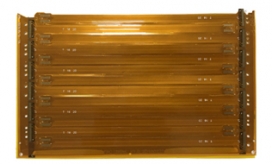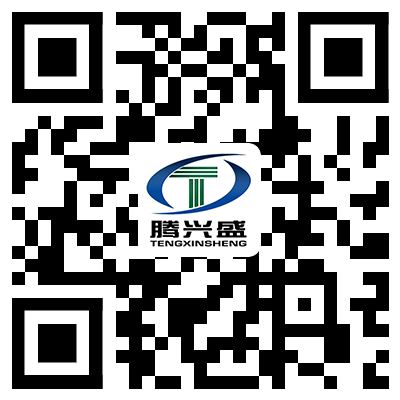
Shenzhen Tengxingsheng Electronics Co., Ltd.
Contact: Miss Wen
Tel: 0755-23286182
Mob: 13570819121
QQ: 1456258664
QQ: 2316907424
Fax: 0755-23286183
Email: txspcbsc@163.com txspcb@163.com
Web : en.txspcb.cn
Add: 3rd Floor, Building 3, Jinkang Industrial Park, No. 1 Shajing Road, Baoan District, Shenzhen
Flexible FPC soft board is a highly reliable and excellent flexible printed circuit board made of polyimide or polyester film. Referred to as soft board or FPC.
Features: It has the characteristics of high wiring density, light weight and thin thickness; it is mainly used in mobile phones, notebook computers, PDAs, digital cameras, LCM and many other products.
Types of FPCs
Single layer FPC
It has a layer of chemically etched conductive patterns, and the conductive pattern layer on the surface of the flexible insulating substrate is rolled copper foil. The insulating substrate can be polyimide, polyethylene terephthalate, aramid and polyvinyl chloride. Single-layer FPC can be divided into the following four subcategories:
1. Single-sided connection without covering layer
The wire pattern is on the insulating base material, and the wire surface has no covering layer, and its interconnection is realized by soldering, welding or pressure welding, which is commonly used in early telephones.
2. One-sided connection with covering layer
Compared with the previous class, only a layer of covering layer is added on the surface of the wire. When covering, the pads need to be exposed, and the end area can be simply not covered. It is one of the most widely used single-sided flexible PCBs and is used in automotive instruments and electronic instruments. Double-sided circuit board
3. Double-sided connection without covering layer
The connection pad interface can be connected on the front and back of the wire, and a via hole is opened on the insulating substrate at the pad. This via hole can be punched, etched or fabricated by other mechanical methods at the desired position of the insulating substrate. to make.
4. Double-sided connection with covering layer
The former class differs in that there is a cover layer on the surface, the cover layer has via holes, which allow it to be terminated on both sides, and still maintain the cover layer, made of two layers of insulating material and one layer of metal conductor.

Double-sided FPC
Double-sided FPC has a conductive pattern etched on both sides of the insulating base film, which increases the wiring density per unit area. The metallized hole connects the patterns on both sides of the insulating material to form a conductive path to meet the flexible design and use function. The cover film protects single and double-sided conductors and indicates where the components are placed. According to the needs, metallized holes and cover layers are optional, and this type of FPC is less used.
Multilayer FPC
Multilayer FPC is to laminate 3 or more layers of single-sided or double-sided flexible circuits together, form metallized holes by drilling and electroplating, and form conductive paths between different layers. In this way, no complicated welding process is required. Multilayer circuits have huge functional differences in higher reliability, better thermal conductivity, and easier assembly performance.
The advantage is that the substrate film is lightweight and has excellent electrical properties, such as a low dielectric constant. According to Coating Online, the multi-layer flexible PCB board made of polyimide film is about 1/3 lighter than the rigid epoxy glass cloth multi-layer PCB board, but it loses the single-sided, Double-sided flexible PCB has excellent flexibility, and most of these products do not require flexibility. Multilayer FPC can be further divided into the following types:
1. Finished flexible insulating substrate
This category is manufactured on flexible insulating substrates, and the finished product is specified to be flexible. This kind of structure usually bonds the two sides of many single-sided or double-sided microstrip flexible PCBs together, but the central part is not bonded together, so it has a high degree of flexibility. For a high degree of flexibility, a thin, suitable coating, such as polyimide, can be used on the conductor layer instead of a thicker laminated cover.
2. Finished product of soft insulating substrate
This category is manufactured on a soft insulating substrate, and its finished product is not required to be flexed. This type of multilayer FPC is made of a flexible insulating material, such as a polyimide film, laminated into a multi -layer board , which loses its inherent flexibility after lamination.
FPC manufacturing process
So far, the FPC manufacturing process is almost all processed by the subtractive method (etching method). According to Coating Online, copper clad laminate is usually used as the starting material, photolithography is used to form a resist layer, and the copper surface of the unnecessary part is etched to form a circuit conductor. Etching has processing limitations for fine circuits due to problems such as undercuts. Security monitoring FPC circuit board
Based on the difficulty of processing by the subtractive method or the difficulty in maintaining a high-yield fine circuit, it is considered that the semi-additive method is an effective method, and various schemes of the semi-additive method have been proposed. Example of microcircuit processing by semi-additive method. The semi-additive process takes the polyimide film as the starting material, and firstly casts (coats) the liquid polyimide resin on a suitable carrier to form the polyimide film.
Next, a crystal-planting layer is formed on the polyimide base film by sputtering, and a resist pattern of the reverse pattern of the circuit is formed on the crystal-planting layer by photolithography, which is called a plating-resistant layer. Conductor circuits are formed by electroplating on the blank portions. Then, the resist layer and the unnecessary seeding layer are removed to form the first layer of circuits. Coat the photosensitive polyimide resin on the first layer of circuit, use photolithography to form holes, protective layer or insulating layer for the second layer of circuit layer, and then sputter on it to form a crystal planting layer, as the first The base conductive layer of the two-layer circuit. By repeating the above process, a multilayer circuit can be formed.
Mob: 13570819121
Email: txspcbsc@163.com
Web : www.retirewealthnetwork.com
Add: Jinkang, No. 1 Shajing Road, Baoan District, Shenzhen
3rd Floor, Building 3, Industrial Park

SWEEP